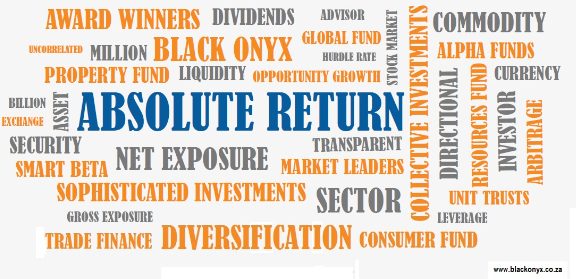The Basic Guide to Regulated Hedge Funds (10-Part Series)
Part 3 - Macro Economics and Volatility

This marks the third chapter of a 10-part series, where I will distribute a chapter from my eBook on Regulated Hedge Funds to the Find an Advisor network every fortnight. Read on to learn about market crashed and economic collapse and the impact it has on various asset classes. Is your current investment portfolio ready for a market correction and what is your strategy in the event of a financial crash?
The purpose of this series, is to inform you and your clients of the 298 CISCA regulated hedge funds that are now available to both retail investors (RIHFs) and qualified investors (QIHFs), as of June 2017.
We will largely be focussed on RIHFs (Retail Investment Hedge Funds) which meet the requirements of Reg 28, exploring various alternative strategies and meeting many of the boutique fund managers along the way.
For more information, please visit my website www.blackonyx.co.za.
Have you ever considered the alternatives?
ü Better returns and less risk than the JSE over time.
ü Better returns and less risk than most unit trusts over time.
ü Portfolio diversification that ensures uncorrelated returns.
ü Active fund management that minimises downside risk.
ü Investor protection via FSB-regulated structures.
* I will reference these statements in more detail throughout this publication with data from fund factsheets, Minimum Disclosure Documents, Morningstar and other asset manager reports. Click here to review the source of the above statements
Let’s get started …
You can download Part 3 here, a PDF file, which includes Benefits and Drawbacks of Hedge Funds
What’s Actually Going on Out There?
“Members of the Congress, It is gratifying to report that for the fourth consecutive year the state of the Union in general is good. We are at peace. The country as a whole has had a prosperity never exceeded. Wages are at their highest range, employment is plentiful… If the people maintain that confidence which they are entitled to have in themselves, in each other, and in America, a comfortable prosperity will continue.”
That was the opening to the USA State of the Union Address, as read by President Coolidge on 6 December 1927. What followed within two years was the Wall Street Crash (29 October 1929), the most devastating stock market collapse in global history, signalling the start of the Great Depression that lasted 10 years. Within two days, 24.6% was wiped off the Dow Jones, with the market eventually losing 87% of its value. All this sandwiched between two World Wars.
Six months before … “Despite the dangers of speculation, many believed that the stock market would continue to rise forever. On March 25, 1929, after the Federal Reserve warned of excessive speculation, a mini crash occurred as investors started to sell stocks at a rapid pace, exposing the market's shaky foundation. Two days later, banker Charles E. Mitchell announced his company the National City Bank would provide $25 million in credit to stop the market's slide. Mitchell's move brought a temporary halt to the financial crisis.” (Wikipedia)
Sound familiar?
…….
To continue reading and learning about the 2008 Global Financial Crisis and 10 other market crashes since the Great Depression and the cyclical behaviour of the markets … click here to download Part 3
Please visit www.blackonyx.co.za to contact me or for more information, or follow me on LinkedIn here for my weekly post on the boutique fund managers we represent at BLACK ONYX, or alternately follow BLACK ONYX on YouTube here or our podcasts here.